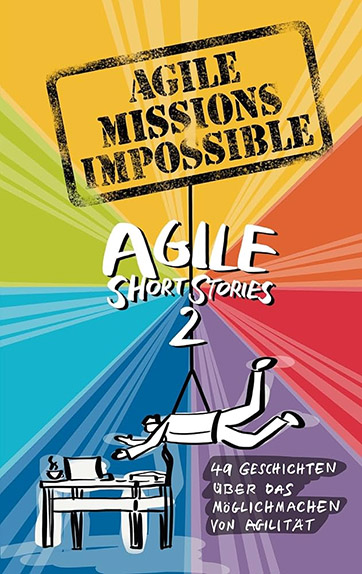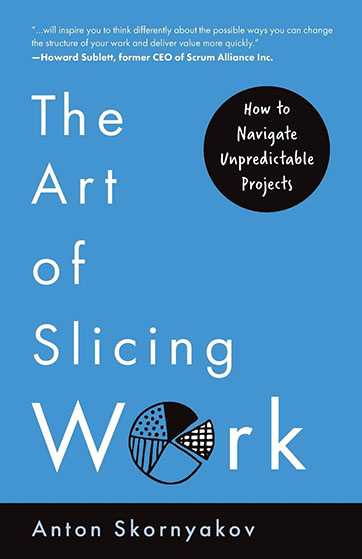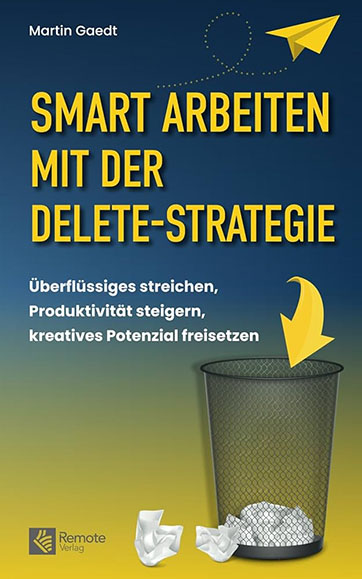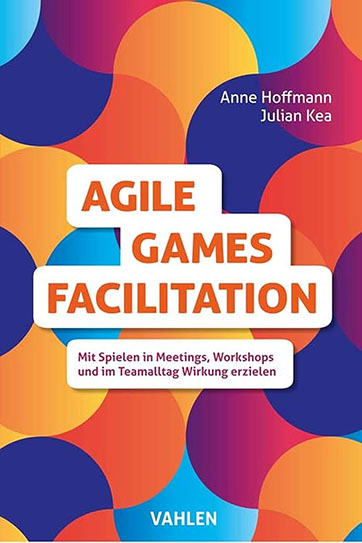Oh, precious books
‘Reading is to the mind what gymnastics is to the body.’ – Joseph Addison
‘A book is like a garden you carry in your pocket.’ – Arabic proverb
‘A room without books is like a body without a soul.’ – Marcus Tullius Cicero
Books accompany us like loyal friends: they inspire us, broaden our horizons and make us think. At a time when we are constantly consuming information, it is all the more valuable to consciously engage with topics in depth – whether for inspiration, learning or simply to gain a new perspective. This is precisely why I would like to present a few books that I think are precious and particularly worth reading. This time by and with Gabriele Andler, Felix Stein, Matthias Künzi, Anton Skornyakov, Martin Gaedt and Julian Kea.
Mindfulness as an attitude
(Achtsamkeit als Haltung)
52 impulses for a successful life
(52 Impulse für ein gelingendes Leben)
Gabriele Andler
Gabriele: In my book ‘Mindfulness as an attitude’, 52 impulses deal with how unconscious ways of seeing and thinking shape our lives and how we can influence them in a targeted and profitable way.
You have probably already experienced for yourself how quickly feelings and thoughts can control your decisions and reactions. At such moments, an old automatism takes over your actions. You may overshoot the mark, overreact or completely misjudge a situation – even though you could know better.
A mindful attitude is the key to changing this automatism. This means that we become aware of our thoughts and feelings instead of letting them take control.
Where do we focus our attention? How quickly do we evaluate the result and how attentive do we remain to the big picture? It’s amazing how much our judgements are linked to our ‘inner attitude’.
Why did you write the book?
Gabriele: I have already written a book about mindfulness, which is about facts, scientific studies and correlations. However, as such books are rarely re-read, much of it is forgotten before it is put into practice.
In ‘Mindfulness as an Attitude’, I refresh this content with practical impulses and lead you into feeling and reflecting with specific reflection questions. It should always be at hand, because you don’t learn a mindful attitude by reading and understanding. Mindfulness as an attitude is learnt by doing. Over and over again!
Who should read the book?
Gabriele: I wrote this book for people who want to actively shape their lives and are willing to reflect and break old patterns. It is also aimed at experienced mindfulness enthusiasts who actively endeavour to adopt a mindful attitude in everyday life.
The book is not suitable for people who remain in a victim role or who constantly want to blame others for their misery. Self-responsibility is a crucial characteristic to benefit from this book.
The book contains 52 impulses on how we can influence our thought and reaction patterns – briefly and concisely. You will learn what role mindfulness plays in this and can get straight into the application with suitable reflection questions.
Here you can find more information about the book ‘Achtsamkeit als Haltung’.
Agile Missions Impossible
49 stories about making agility possible
(49 Geschichten über das Möglichmachen von Agilität)
Felix Stein
Felix, what is your book about?
Felix: ‘Agile Missions Impossible’ is a collection of short stories written by Scrum Masters, Agile Coaches and other ‘agile practitioners’. One of them is mine, it is about the (temporarily successful) attempt to get the technical and human complexity of a large agile corporate project under control. In keeping with the theme of the book, it is also about a ‘demanding challenge’ in which I suddenly found myself, how I overcame it and (as a final punch line) how everything slipped away from me again, so that in the end I was left with a learning effect.
Why have you contributed to the book?
Felix: After 15 years in agile transitions and development projects, I have accumulated a wealth of anecdotes and experiences, and the feedback I keep getting is that I should actually write them down. The short story in this book is a first step in this direction, let’s see what else is to come. And as a side effect, I now find it easier to explain what I do at parties. I no longer have to say that I’m an Agile Coaches (and then explain it at length), I can now say that I’m a writer.
And who should read the book?
Felix: Anyone who works in large corporate projects and is looking for confirmation that they are not the only one who recognises the absurd elements in them. Anyone who wants to know how things actually work in large organisations. And anyone who likes a slightly Kafkaesque sense of humour.
Here you can find more information about the book ‘Agile Missions Impossible’.
Navigating software complexity
(Navigigieren in der Software-Komplexität)
Getting there in a structured and systematic way: A guide to well-constructed software products and optimised development organisations
(Strukturiert und systematisch ans Ziel: Ein Wegweiser für gut konstruierte Software-Produkte und optimierte Entwicklungsorganisationen)
Matthias Künzi
Matthias, what is your book about?
Matthias: My book is about how software projects can be successfully organised despite their often considerable complexity. In many products, software is now the biggest driver of time and costs, and the challenges are enormous: technical debt, a lack of structure and growing requirements quickly lead projects into difficulties.
In the book, I show that a clear, engineering-like approach can help to overcome these challenges. It provides a sound, systematic method for developing well-constructed and structured software products – in other words, a solid software architecture, as we would say in software jargon – and for the optimisation of development organisations.
The reader is given practical insights into how both technical and organisational challenges can be overcome through targeted planning and structuring – even without in-depth software expert knowledge. My aim was to show that with the right methodology, even complex software projects can be mastered.
Why did you write the book?
Matthias: One of the main reasons why I wrote this book is that many project and product managers lack an understanding of software development. Software is, as the name suggests, something immaterial – you can’t touch it, which often makes its structure and the processes behind it seem mysterious and difficult to understand. Many of the terms we use in the industry, such as architecture or design, are not self-explanatory and often make software development seem more like a creative art form. But the truth is that it is first and foremost an engineering discipline. With this book, I would like to show that the classic engineering approaches such as structuring, systematics and methodology are also indispensable in software development and make access to software development much easier. To make this even easier to understand, I have used many visualisations to make the often abstract subject matter tangible and clear.
Another reason for this book is that I see time and again with my customers that software development is often approached in an astonishingly unstructured, ill-considered and unplanned manner, despite the methods and structuring options available. Instead of proceeding in a structured, systematic and methodical way, as an engineering discipline would require, people often improvise and just react, without clear goals and comprehensible steps. The optimisation of the development organisation in particular – i.e. the question of how teams and processes need to be set up in order to develop software efficiently – is often treated as something exotic that only Agile Coaches can really get to grips with. But even these challenges can be overcome with clear requirements, goals and a systematic approach.
My aim with this book is therefore to show that software development and its organisation do not have to be shrouded in the fog of buzzwords and seemingly exclusive knowledge. With the right approach, it can be made understandable, plannable and successful.
And who should read the book?
Matthias: The book is aimed at anyone who is responsible for software projects and wants more structure, clarity and control – regardless of whether they have a software background themselves. It is aimed at development managers, project managers, CTOs and anyone else who manages software projects and wants to ensure that they remain manageable and within the framework. Product managers and engineers from other technical disciplines who increasingly have to deal with software development will also find valuable support here.
The book provides practice-oriented insights and a systematic method for developing well-constructed software products – in short: a resilient software architecture – and optimally setting up the development organisation. It helps to make software development tangible through comprehensible explanations and many visualisations.
Anyone aiming to create future-proof software products, manage software projects in a structured and efficient way by better understanding software developers and supporting projects on an equal footing – or anyone wanting to improve collaboration in development organisations will find this book a valuable companion.
Here you can find more information about the book ‘Navigieren in der Software-Komplexität’.
The Art of Slicing Work
How to Navigate Unpredictable Projects
Anton Skornyakov
Anton: The book explains how to implement incremental working in areas of work that have nothing to do with software or even product development. Above all, it’s about how to cut undertakings of any kind into small slices (increments) that can be delivered within a few weeks.
I use modified examples from customer projects that come from very different industries and application areas (non-profits, public organisations and for-profit companies) to inspire as wide a range of readers as possible. In this way, readers also learn to abstract from the domain, which makes the principles conveyed even clearer. I deliberately refrain from using technical terms from Scrum or the rest of the agile world in the book. These often cause people from outside the field to drop out before they have even recognised the value for themselves.
In the book, readers learn how the different ways of breaking down work affect aspects such as: Delegation, accountability, learnability, self-improvement, measuring progress, project overview, managing scope and efficiency.
Finally, there is a general guide to cutting projects/undertakings.
Why did you write the book?
Anton: It is very important to me that organisations outside of product development also learn to deal with unpredictability. In the agile world, we have been developing tried and tested tools for this for several decades. However, transfer often doesn’t work because of the technical language and the lack of focus in communication. Too much is communicated at the same time about what needs to be changed: real leadership, flat hierarchies, different roles, retrospectives, dailies, managing dependencies, visualisation. This is all important, but in my view it is the second step.
From my experience, we need to start with tangible results that outsiders can judge. When an organisation really becomes more adaptable, the first thing that changes is the results it tries to deliver.
And who should read the book?
Anton: The book is aimed at anyone who manages work or projects professionally, especially if they are frequently affected by change and unpredictability in their daily work. This is especially true for all areas of organisations and industries where agility is usually atypical, such as public authorities, non-profit organisations, administration, marketing, sales, compliance, purchasing, etc.
Here you can find more information about the book ‘The Art of Slicing Work’.
Work smart with the delete strategy
(Smart arbeiten mit der Delete-Strategie)
Delete the superfluous, increase productivity, unleash creative potential
(Überflüssiges streichen, Produktivität steigern, kreatives Potenzial freisetzen)
Martin Gaedt
Martin: The key question is: What can we leave out? What waste can we no longer afford? Which activities are worthless? Which processes are too full? All of this leads to overwork, illness and poor results.
We can work smart and do less by deleting superfluous, expensive and worthless tasks. Focus frees up resources. Relief improves performance and service and therefore turnover.
We should delete everything that gets in the way of health. Let’s make room for the next, better version of healthy and smart work.
Why did you write the book?
Martin: Overload at work is something I hear more and more often in conversations. More and more tasks, requirements, tools, digital platforms, laws, products and processes are being added to everyday working life. It’s too much of everything.
Instead of more time management, more efficiency and more self-optimisation, I suggest: First delete, declutter, delete, omit and create space.
Not more tasks and more projects, but: What do we leave out? De-cluttered work relieves people and thus improves work, because healthy people are more efficient.
And who should read the book?
Martin: With its 40 specific exercises and 244 examples from companies, the book supports anyone who feels overloaded. Many readers start deleting it straight away.
The most effective way to relieve stress is when teams work together to clear out worthless tasks and processes. Then the whole company is tidied up and efficient. This is achieved when everyone involved reviews their activities. How much time is being used? How much value does it bring to the company? Everyone will find at least one activity that takes up a lot of time and brings little benefit. Delete it.
Organisations that have started doing this continue to do so because the relief is experienced and the free space is put to good use.
We are currently producing too much unhealthy work. As we shape the working conditions, we can change them at any time. If you’re in the mood for inspiring stories, you’ll find plenty of positive examples in the book.
You can find more information about the book ‘Smart arbeiten mit der Delete-Strategie’.
Agile Games Facilitation
Make an impact with games in meetings, workshops and in everyday team life
(Mit Spielen in Meetings, Workshops und im Teamalltag Wirkung erzielen)
Julian Kea
Julian: Our book ‘Agile Games Facilitation’ shows how games and interactive methods can help to sustainably promote learning and collaboration in a variety of professional contexts.
We want to inspire people to use serious games in a targeted and effective way to trigger thought processes, break through entrenched patterns and open up new perspectives. Games are more than just entertainment – they make it possible to convey complex topics and challenges in a practical, captivating and at the same time sustainable way, whether in personnel development, team development or change management.
This book provides the tools to make workshops more lively and effective. Each chapter offers practical instructions and tools that can be used to implement games directly – from planning and implementation to reflection, which deepens the experience and transfers it to everyday work.
Why did you write the book?
Julian: We wrote this book because we know from our experience in training and consulting how powerful games can be. Many learning designs are too rigid, not practical enough and often don’t really reach the participants. Games open doors – they activate, make learning tangible and create an emotional connection that lasts.
Our goal was to make the underlying theory of the impact of games easy to understand and to provide practical tips to help facilitators, trainers and managers make their workshops even more effective with serious games. The book is intended to be both a source of inspiration and a practical handbook for anyone who wants to make learning and collaboration lively and effective.
And who should read the book?
Julian: Our book is aimed at people who want to develop their methods and use interactive elements in workshops and training sessions. From trainers and coaches to managers and team leaders, it offers ideas and tools for anyone who wants to create interactive and sustainable learning processes.
It is ideal for those who want to learn new approaches as well as for experienced facilitators who want to enrich their existing toolbox. We want to put the ideas into practical application to create real added value for participants. And we look forward to hearing stories and experiences with the methods from our book in order to actively shape the future of learning together!
Here you can find more information about the book ‘Agile Games Facilitation’.
Which books do you find precious and why?
There are many books in business literature that appeal to different groups of readers. But what exactly makes a book precious? Is it the derivation of correlations that allows us to better understand topics in depth? Or is it the practical examples that we can compare with our own experiences? Perhaps it is also the humorous anecdotes of the authors that make us smile and encourage us to read on?
The answer to this question is subjective and of course varies from person to person. Personally, I am regularly fascinated by what motivates people to write specialised books. The individual reasons in particular give the whole thing a unique flavour. For me, that is precious.
Notes:
If you like the article or would like to discuss it, please feel free to share it in your network. And if you have any comments, please do not hesitate to send us a message.
Here you can find more articles with book recommendations:
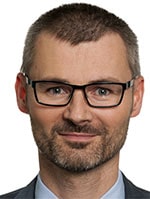
Michael Schenkel
Head of Marketing, t2informatik GmbH
Michael Schenkel has a heart for marketing - so it is fitting that he is responsible for marketing at t2informatik. He likes to blog, likes a change of perspective and tries to offer useful information - e.g. here in the blog - at a time when there is a lot of talk about people's decreasing attention span. If you feel like it, arrange to meet him for a coffee and a piece of cake; he will certainly look forward to it!

